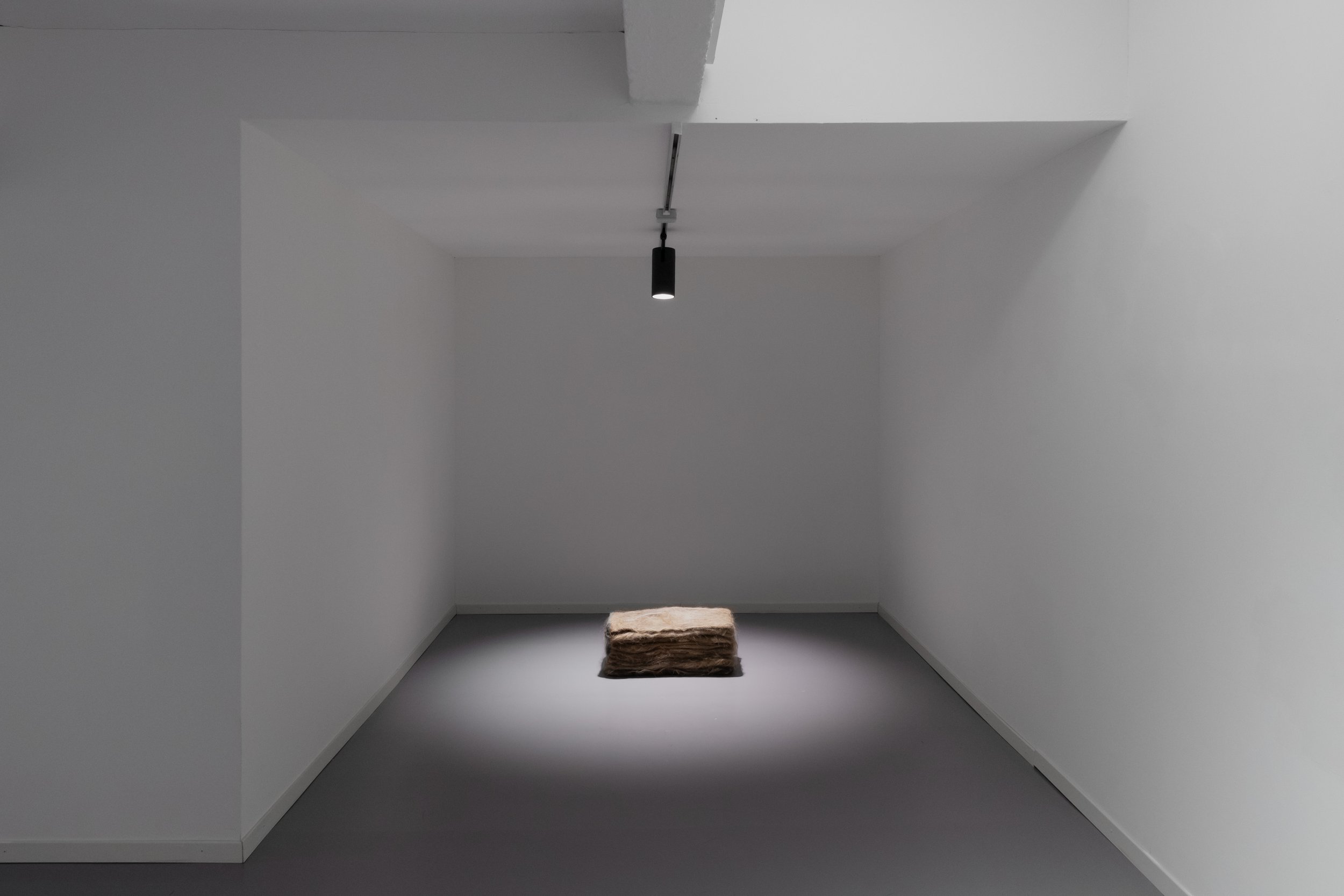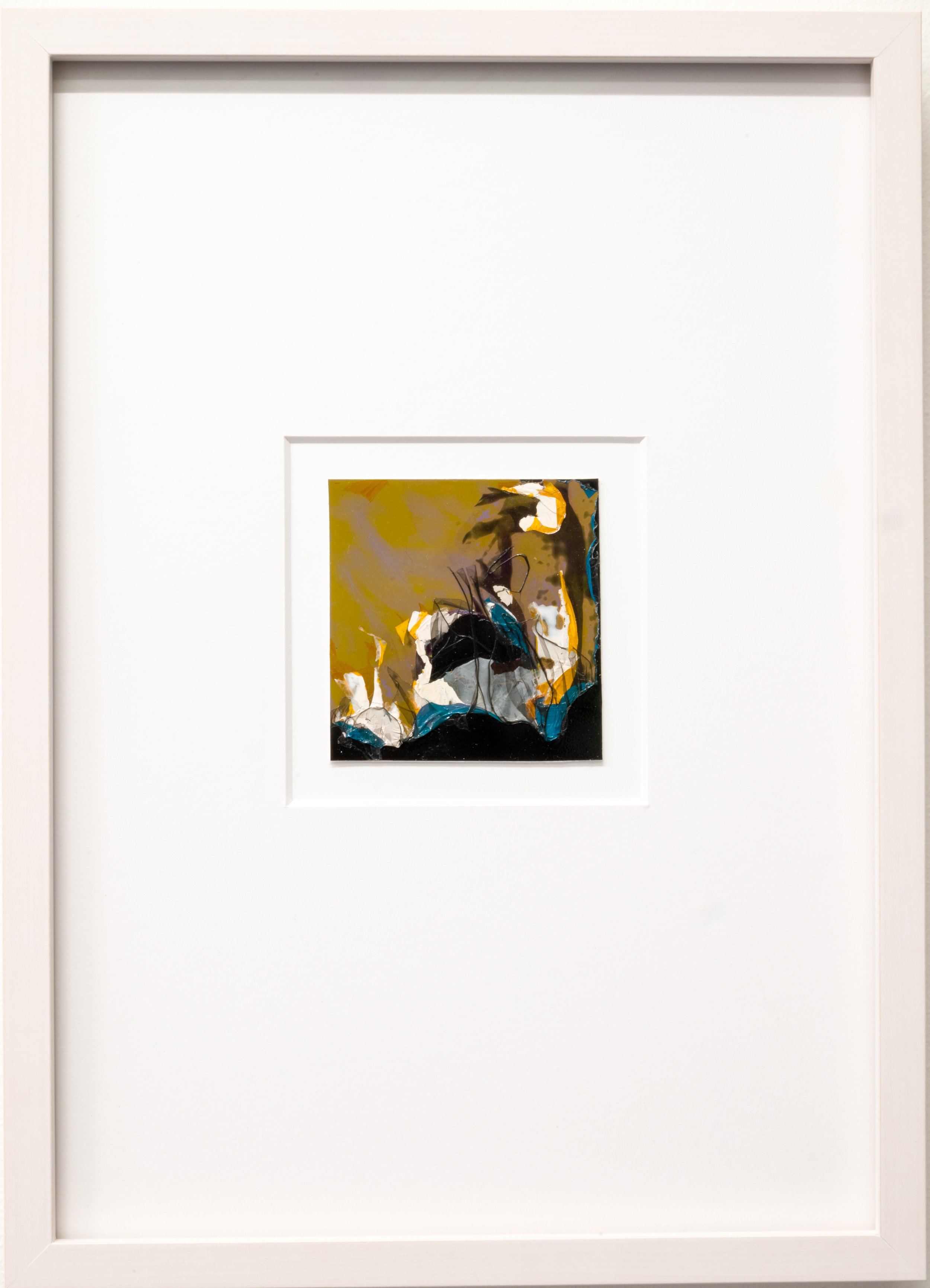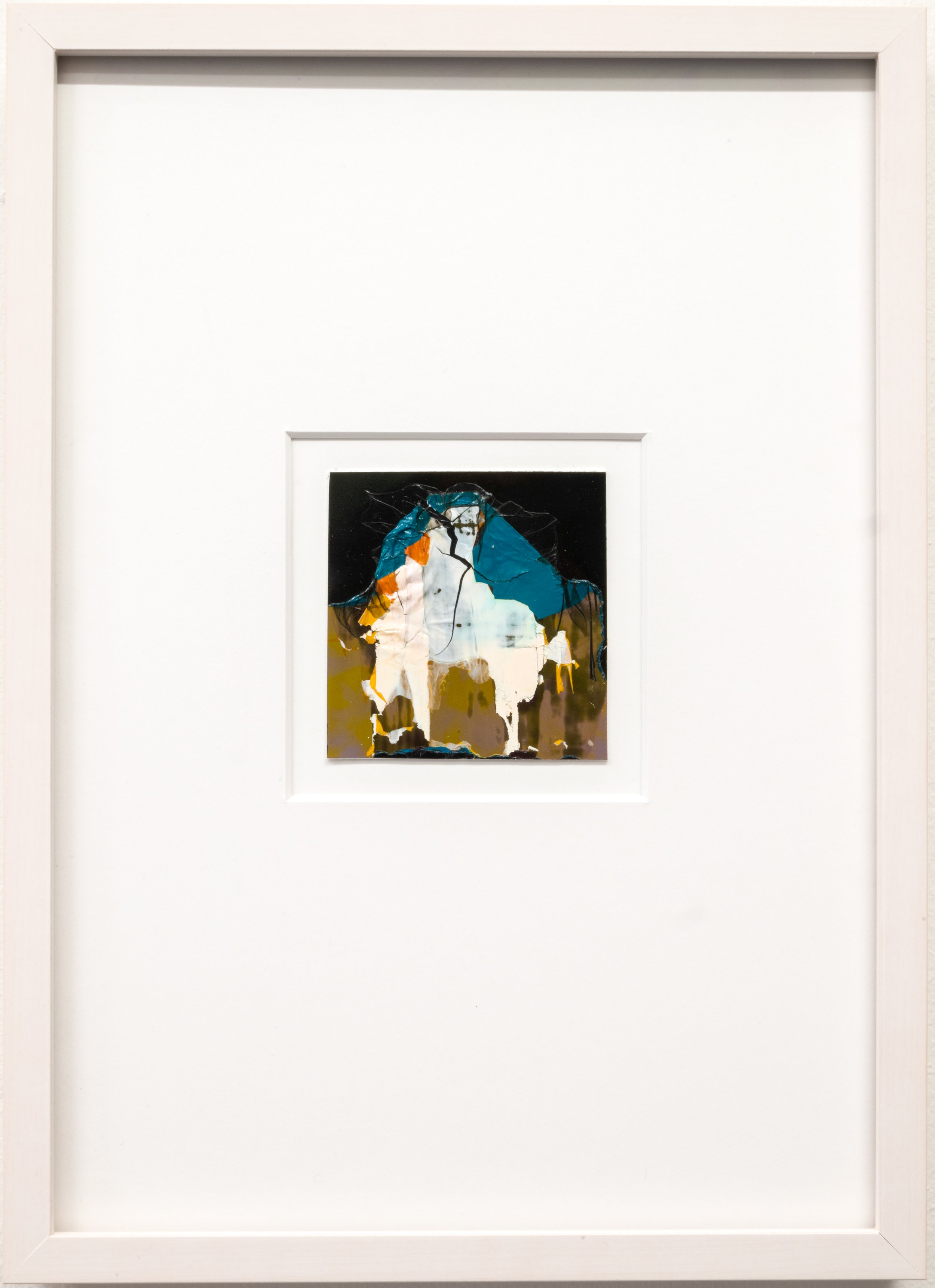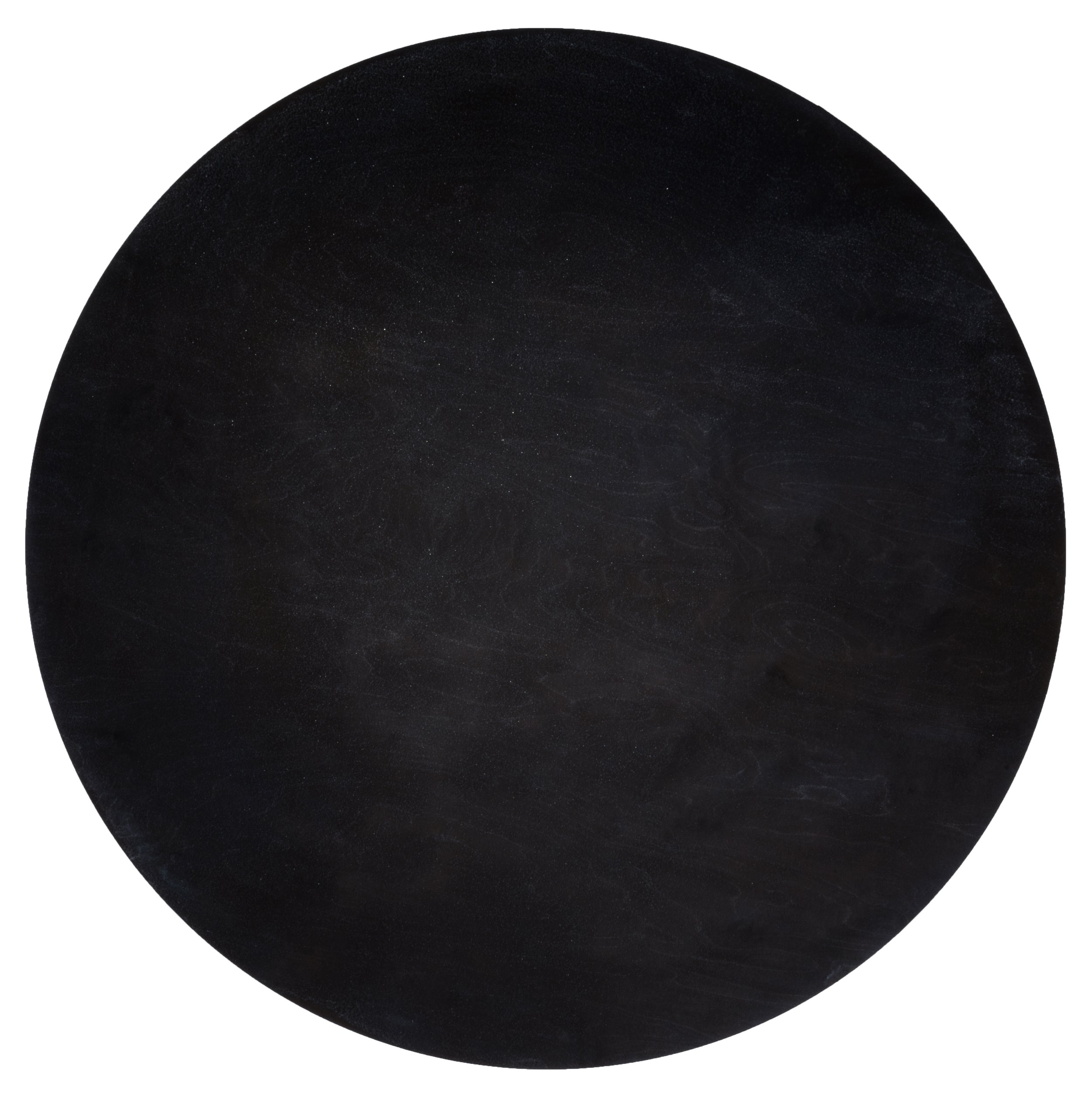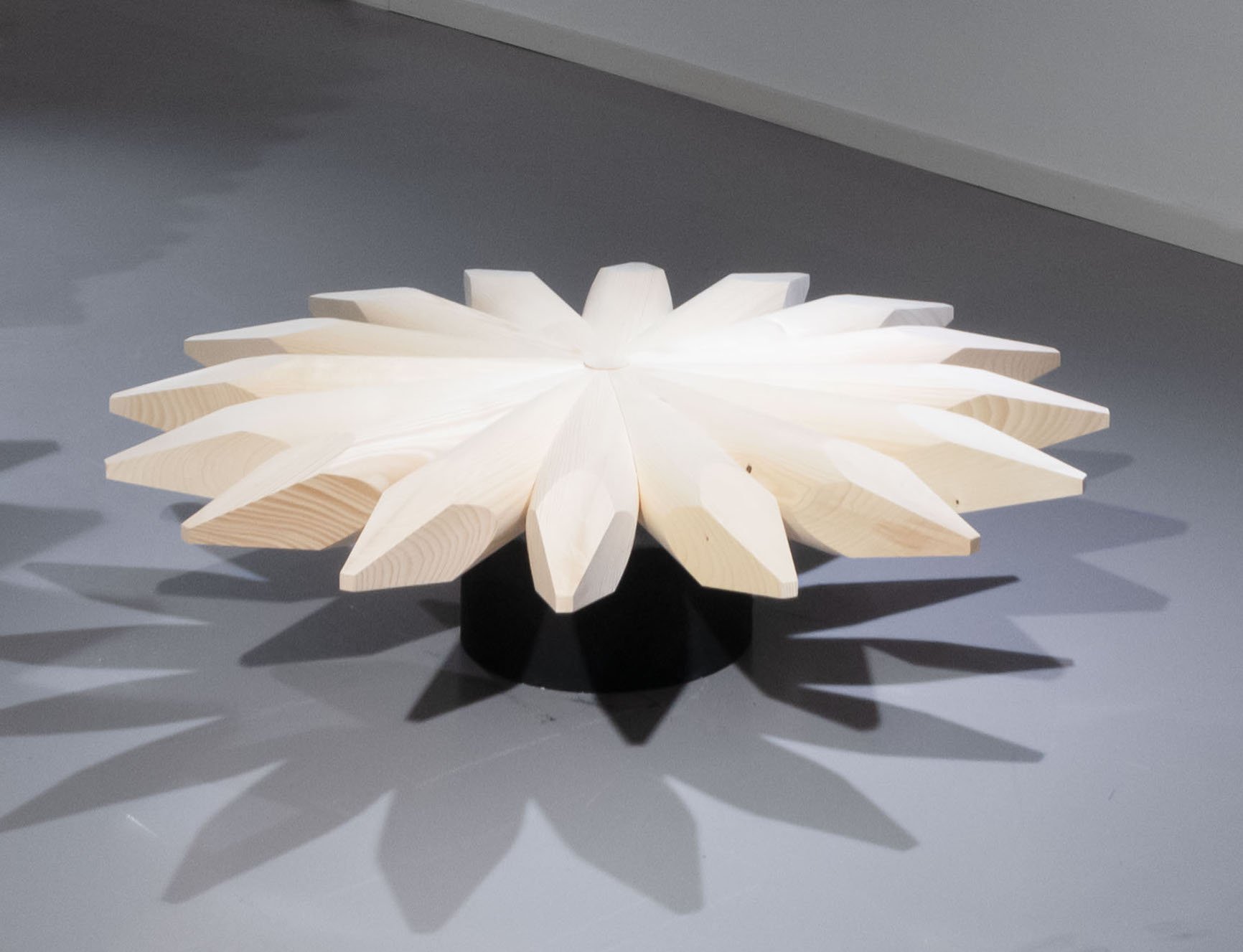Marie Matusz
Prequel
14 January — 4 March 2023
Press Release
Prequel suggests a narrative landscape that spreads over three floors of the gallery in dialogue with its architectural features. Outside of the gallery, in the window display, Matusz presents a fragmented sculpture, a new version of a previous work (Soon, 2021), which she realized for the public space outside the headquarters of the Pro Helvetia building in Zurich.
The term “Prequel” refers to the action that takes place before an original narrative. As the third chapter in a three-exhibition series, Prequeldoesn’t conclude the series but rather leads up to the beginning by raising fundamental questions about motion, production, perception and time – aspects that were already present in the previous exhibitions.
In Fall (Swiss Institute Milan, 2022) Matusz designed a minimalist labyrinth consisting of black reflective display cases that created an endless mirroring of the works and an entanglement with the reflections of the perceiving spectator. Her layering of changing reflective surfaces evoked the sensation of liquidity within a moving image of abyssal depth. Equally, in Lonely Daters (Clima Gallery, Milan, 2022) Matusz's work created an image of physical and metaphysical profundity. She did so by covering the floor with more than three tons of slate stones, displaying sun bleached materials, rain marks on fabrics, and signs of wear on wax coated cotton. The surfaces of the materials – altered through time and environmental impacts - thereby suggested an inherent age value and conveyed the exhibition with a raw and dry character.
By describing physical systems, the works presented in Prequel intend to recreate movement within their static form. Lines, tracks, and overlaps provoke both the ideas of motion and the act of producing. Drawing a bridge with artists of the Futurist movement, such as Giacomo Balla, who were concerned with motion, speed, and development in relation to industrialization, Matusz’s work speaks about the physical experience of materials and their narratives in relation to the post-industrial era.
In the exhibition, a series of three works consisting of Forex plates partially covered with acrylic glass were engraved mechanically and show the chorographical traces of their technical production. In another group of works a chemical process was initiated by applying photographic developer on the mat ink surface of the black wood panels, which eventually developed a shimmering effect of crystallized salt particles. Here again, it’s the subtle traces of contingent production that give an unforeseen singularity to the bare materials of Matusz’s works.
László Moholy-Nagy (From Material to Architecture, 1929) introduced the concepts of structure, texture, and faktura to describe surfaces. He described surfaces of artworks as haptic-tactile entities, whereby faktura denotes an aesthetic category referring to the visible and tangible material effect resulting from the physical processing of the material. The raw wood of the sculptural work “The Century of Measure” (2023) reveals the materiality of its untreated surface. Whereas pine needles and a blanket woven of human hair are displayed outside from their natural context. It’s the inherent narrative of the sculptural works that guide the viewer through the exhibition evoking singular associations and emotions which are enhanced by the repeatedly emerging monochrome surfaces that create an unavoidable illusion of depth.
Swimmers on the shore, 2023 Polaroid 7.7 x 7.5 cm
Swimmers on the shore, 2023 Polaroid 7.7 x 7.5 cm
Swimmers on the shore, 2023 Polaroid 7.7 x 7.5 cm
A distance away (the Sun, the Abyss and the Rest), 2023 Ink, photographic color developer, fixativ, wood 149 x 149 cm
A distance away (the Sun, the Abyss and the Rest), 2023 Ink, photographic color developer, fixativ, wood 149 x 149 cm
A distance away (the Sun, the Abyss and the Rest), 2023 Ink, photographic color developer, fixativ, wood 149 x 149 cm
The train my heart and my hands tonight are late, 2023 Pigments, acrylic, spray, varnish, forex, acrylic glass 73.5 x 124 cm
The oil can, 2023 Pigments, acrylic varnish, forex, acrylic glass 101 x 151 cm
The street is big and sad like a boulevard, 2023 Pigments, acrylic, varnish, forex, acrylic glass 74 x 197 cm
The doomed, 2022 Hair mats 24 x 62 x 32 cm
How many left, 2023 Pine needles, acrylic glass 25 x 25 x 35 cm
No space no time no subject, 2023 Aluminum, acrylic glass 29 x 80 x 4 cm
The Century of Measure, 2023 Wood 120 x 112 cm
The Century of Measure, 2023 Wood 30 x 112 cm






